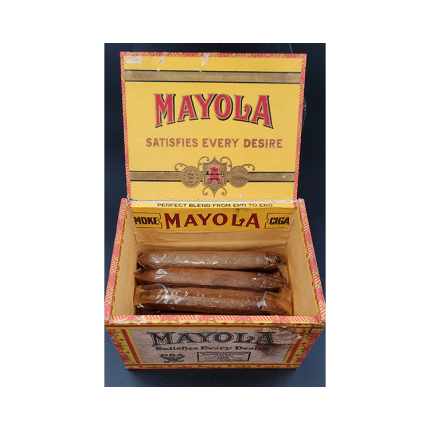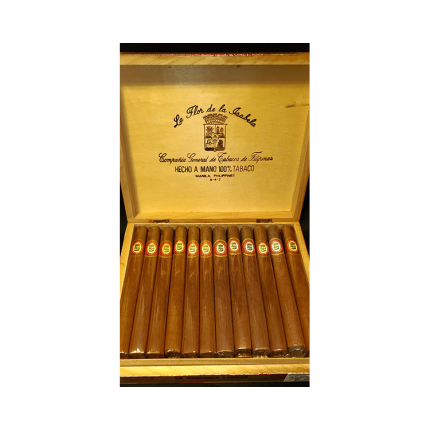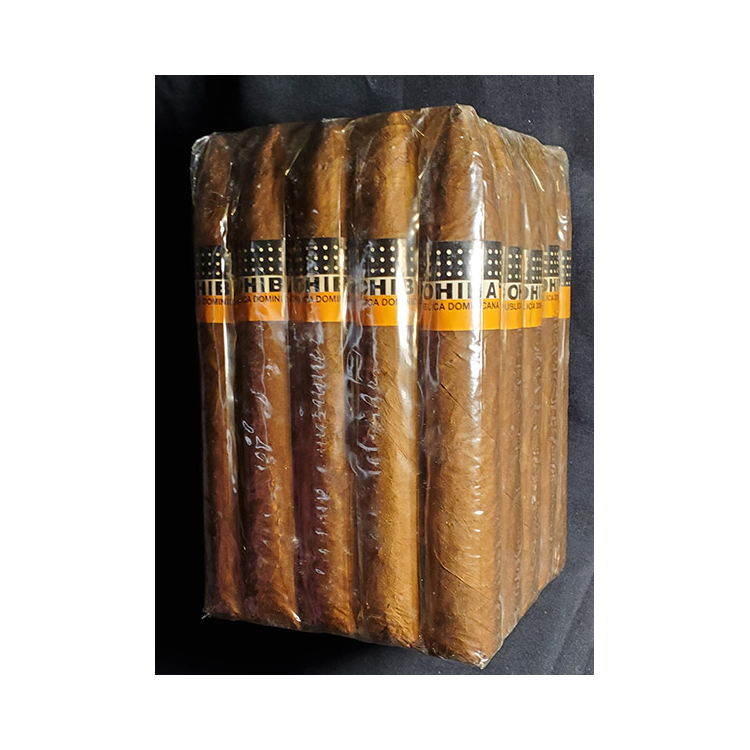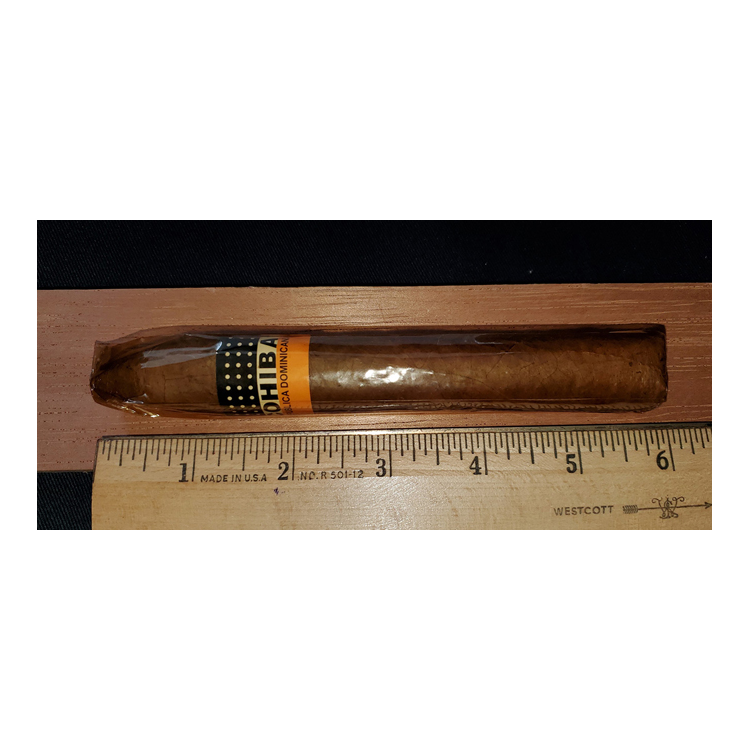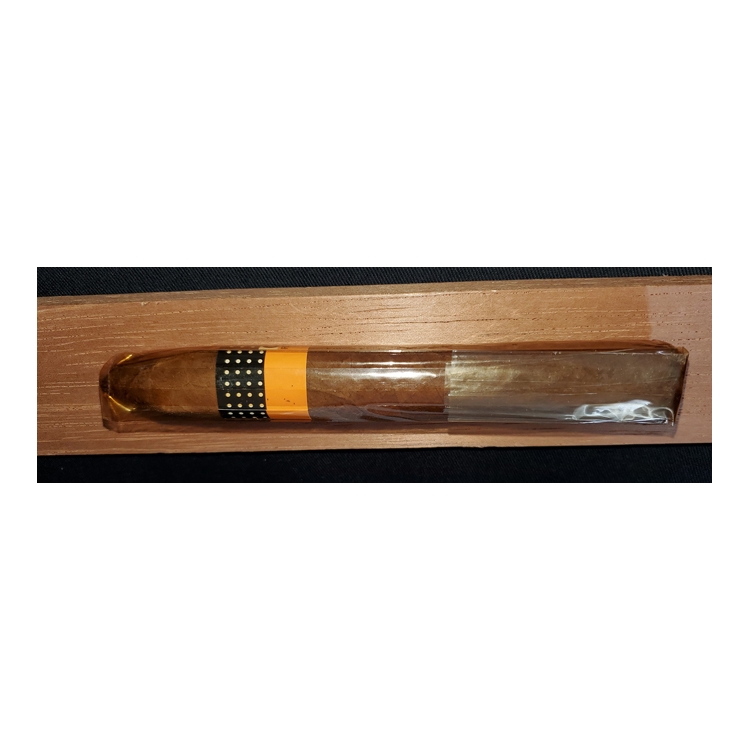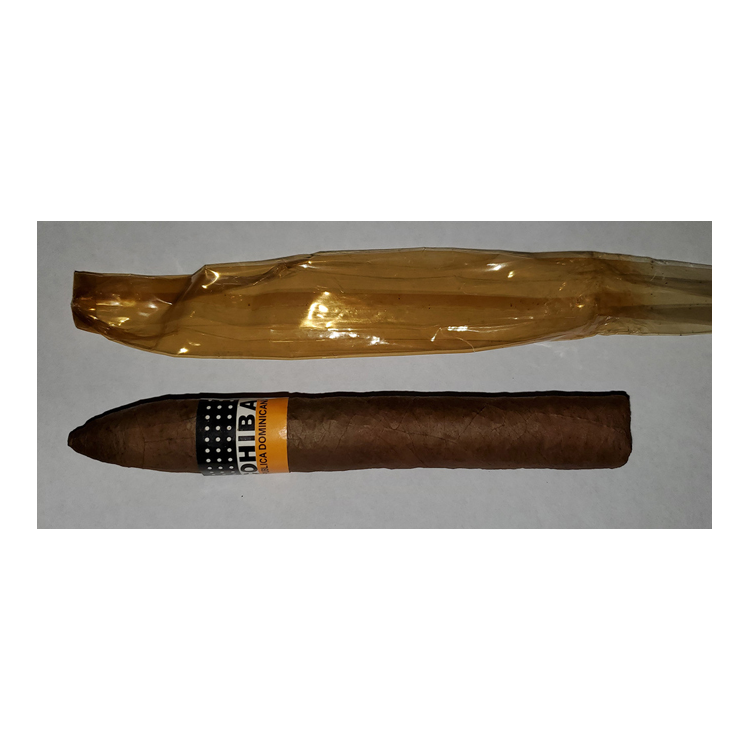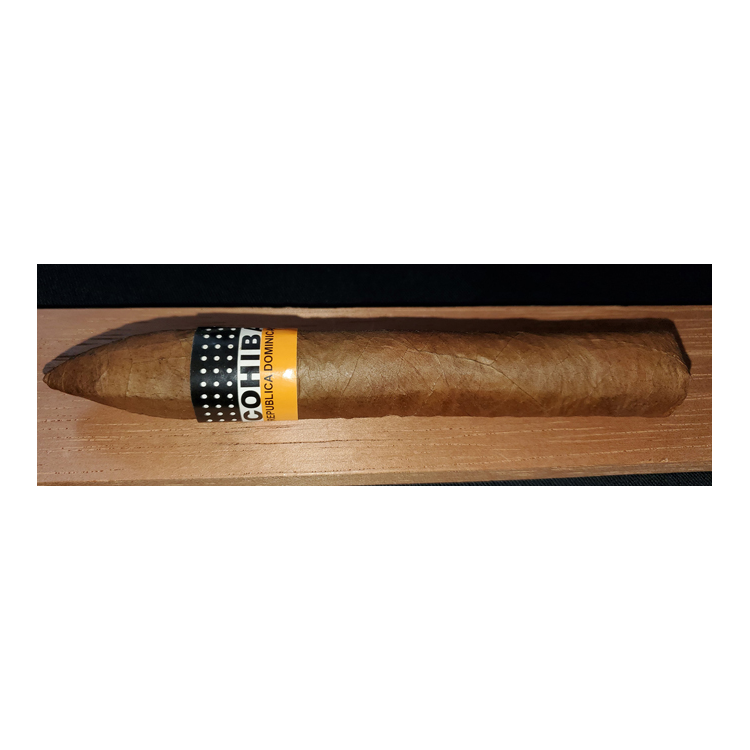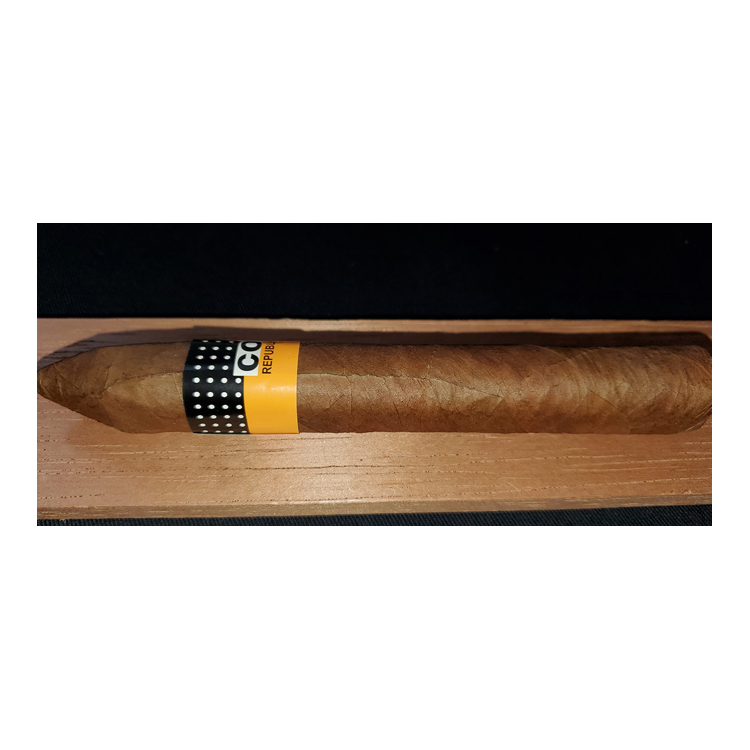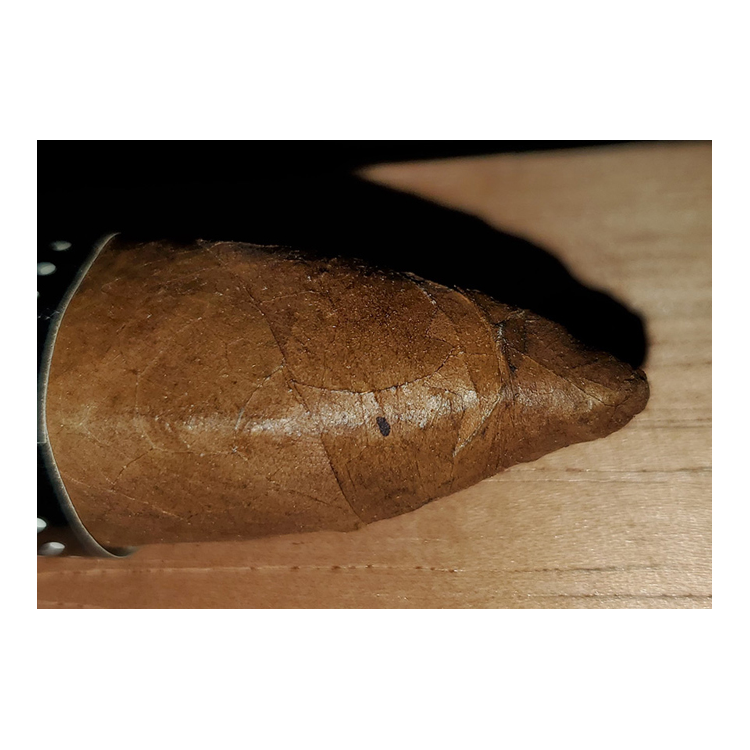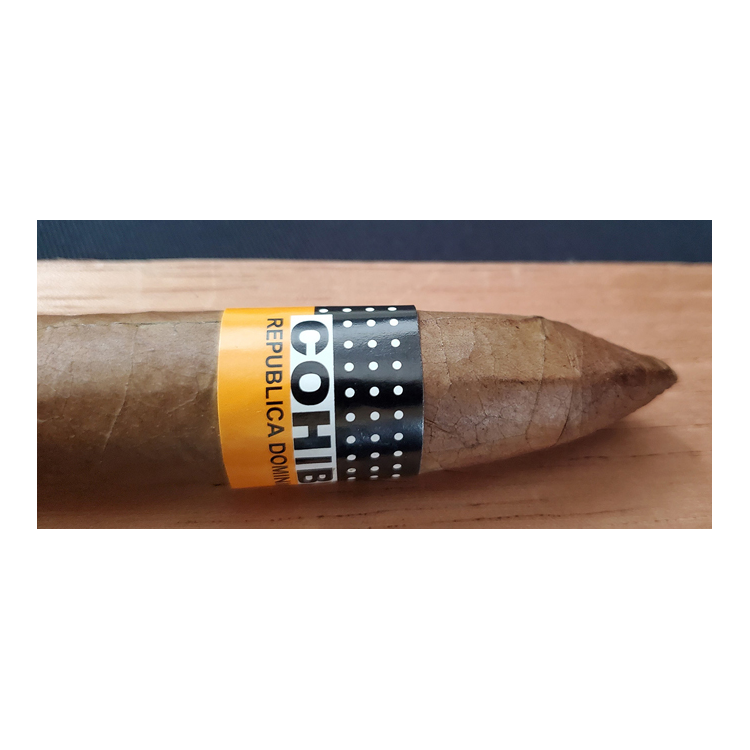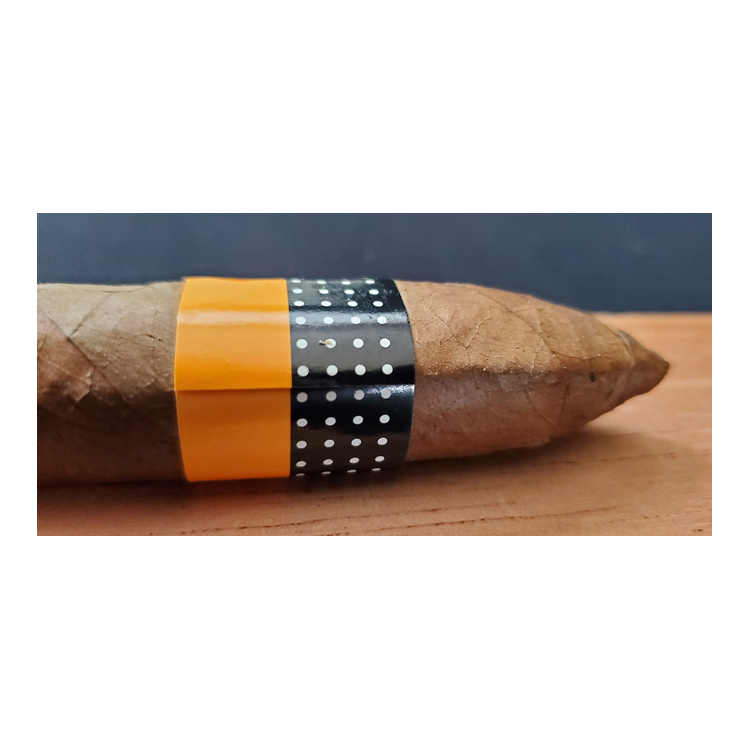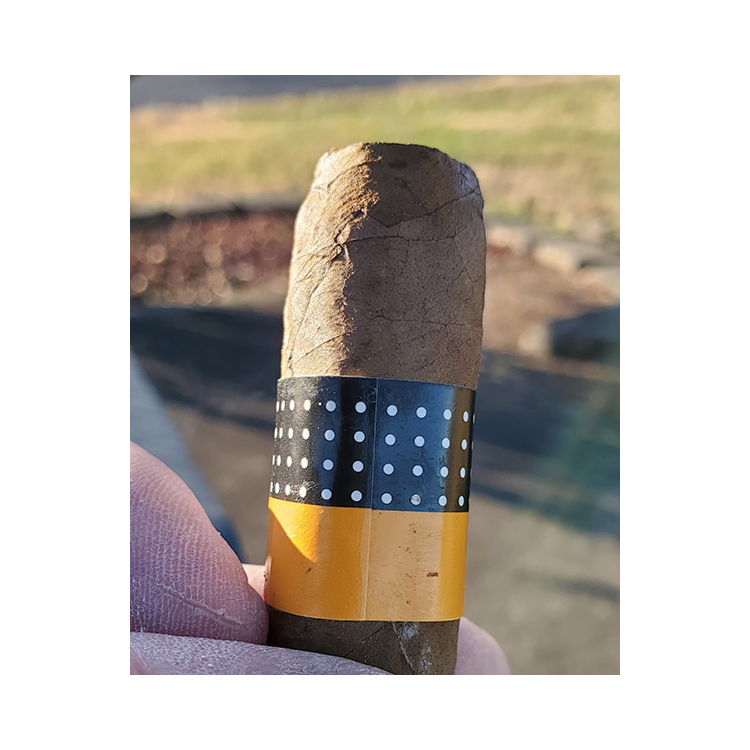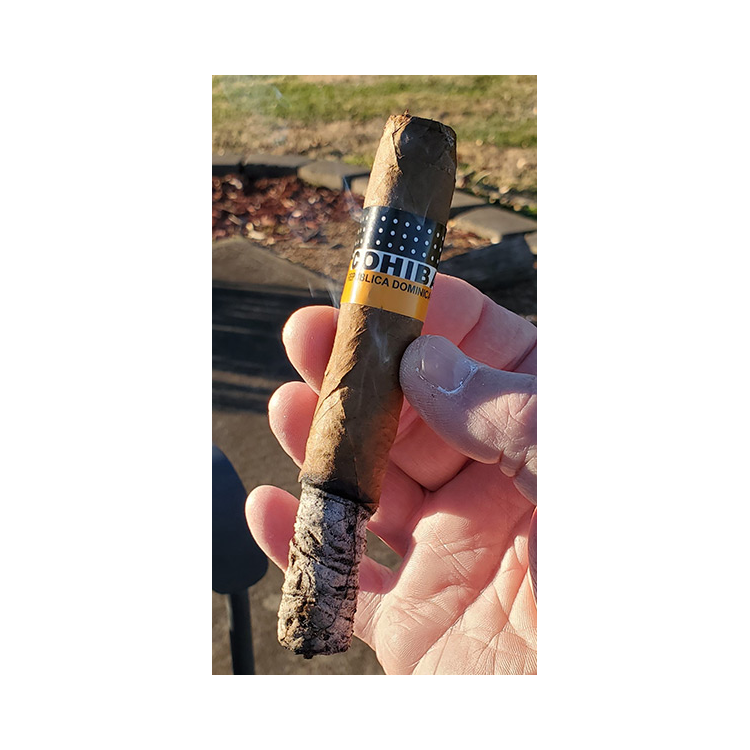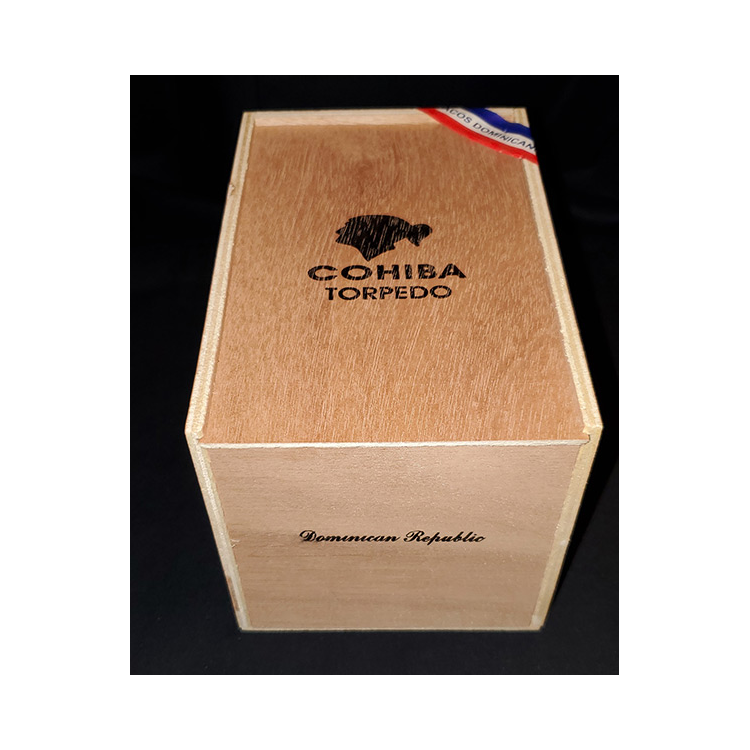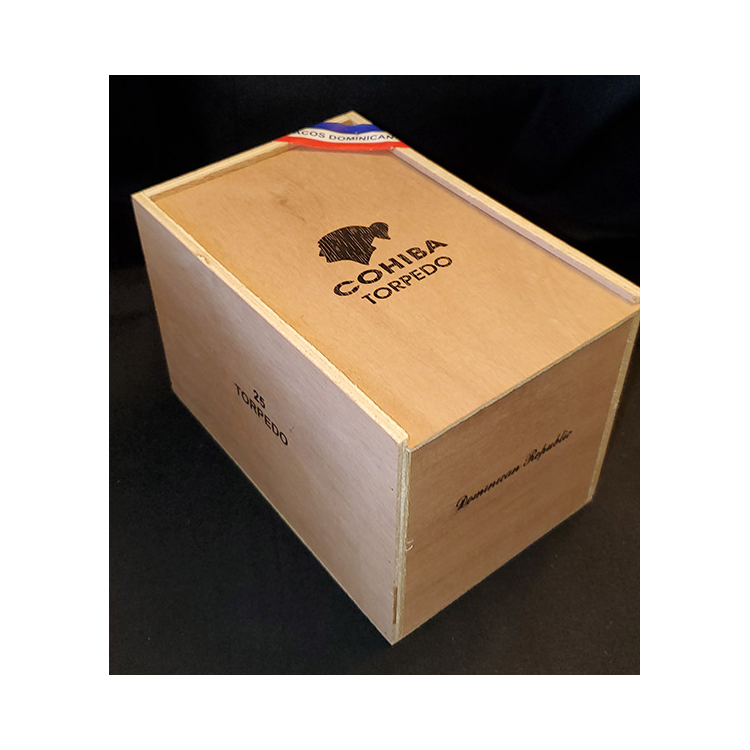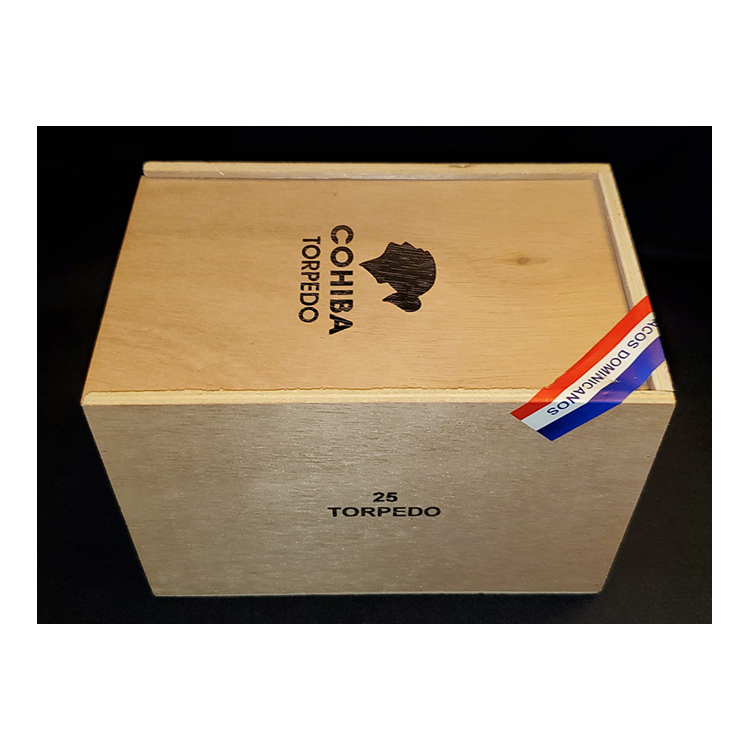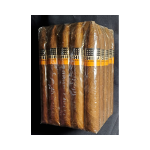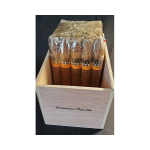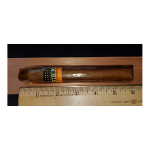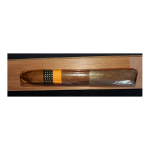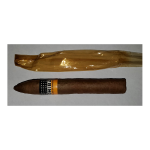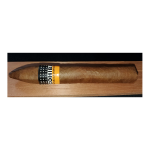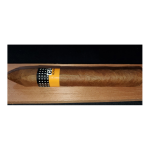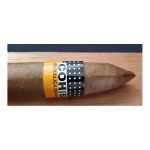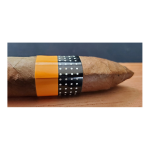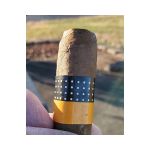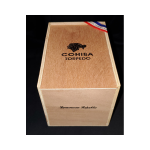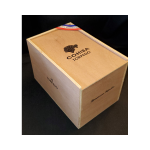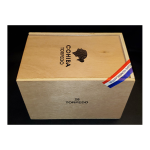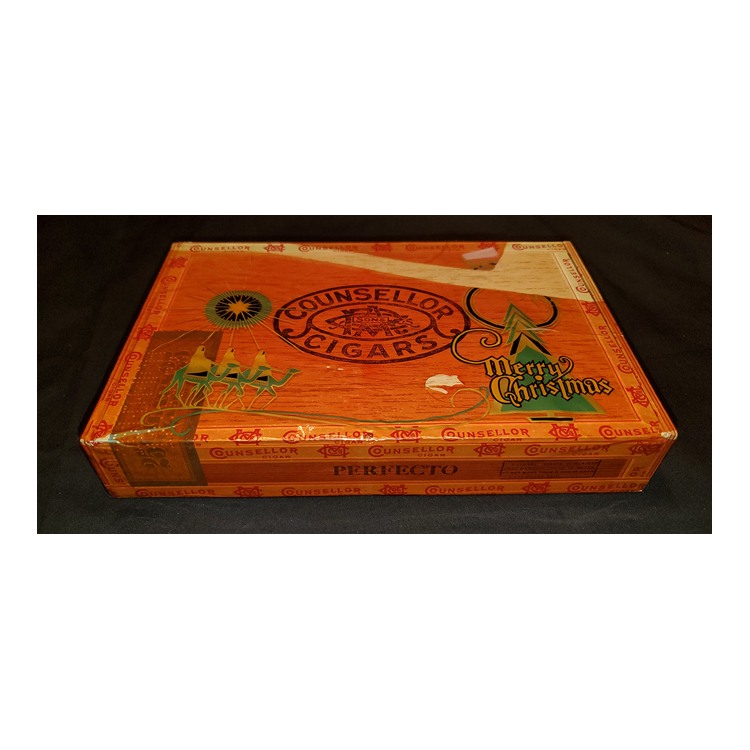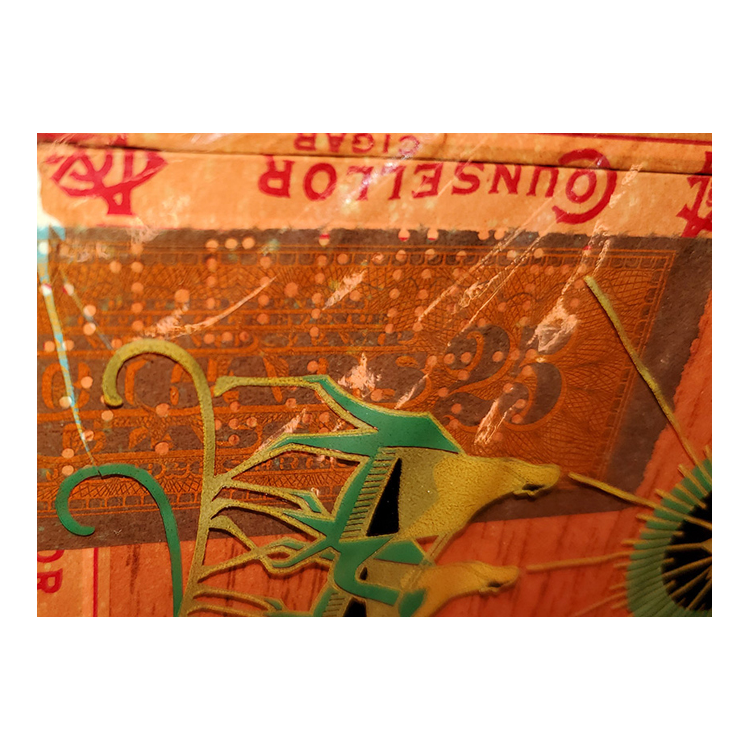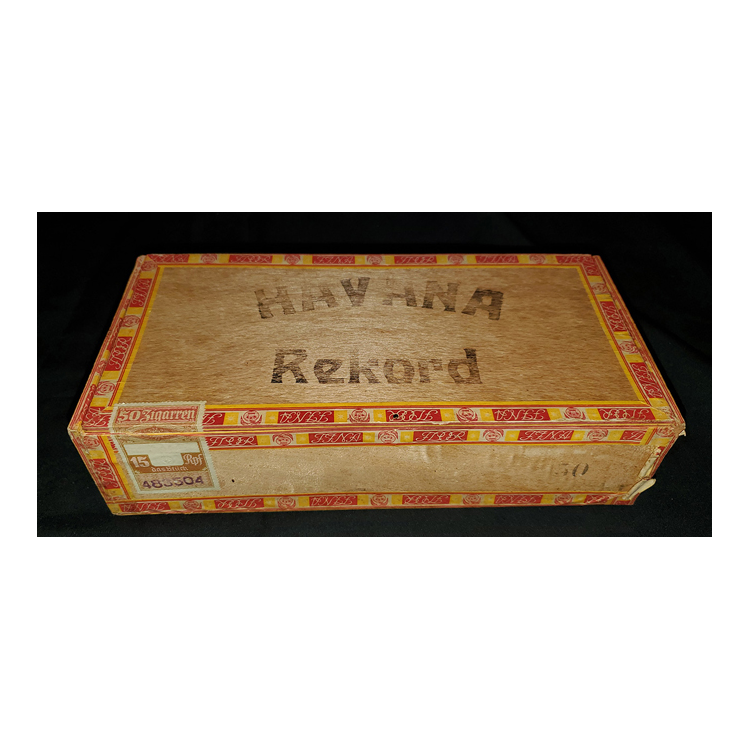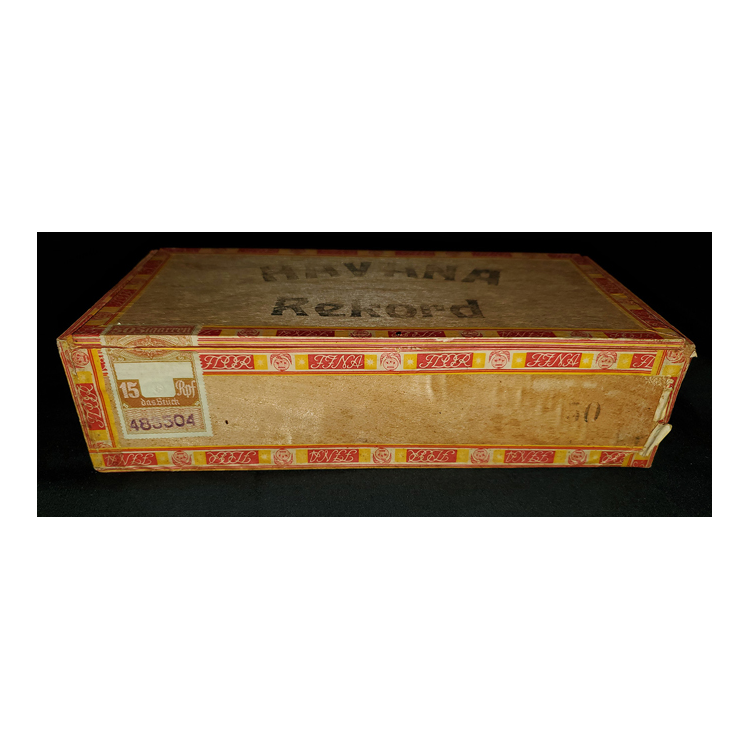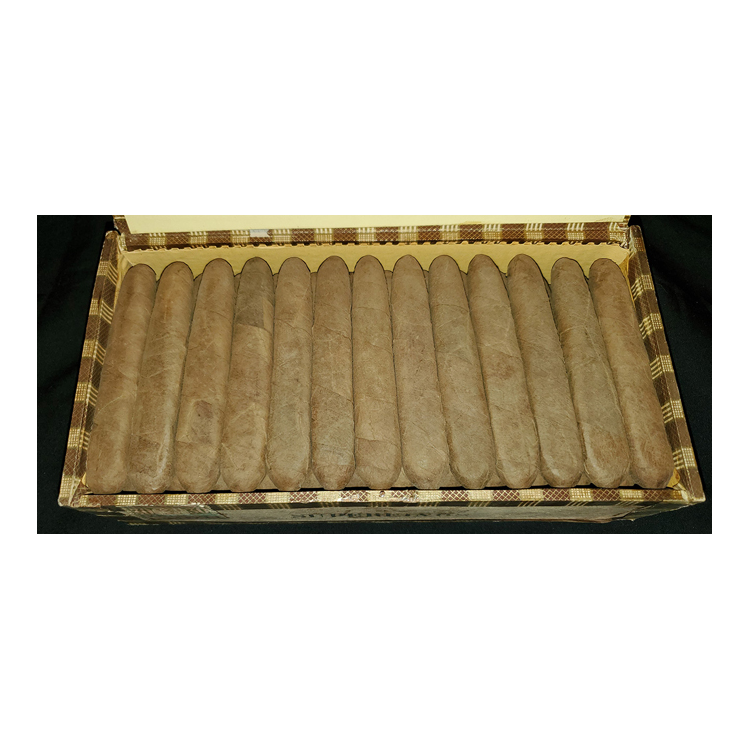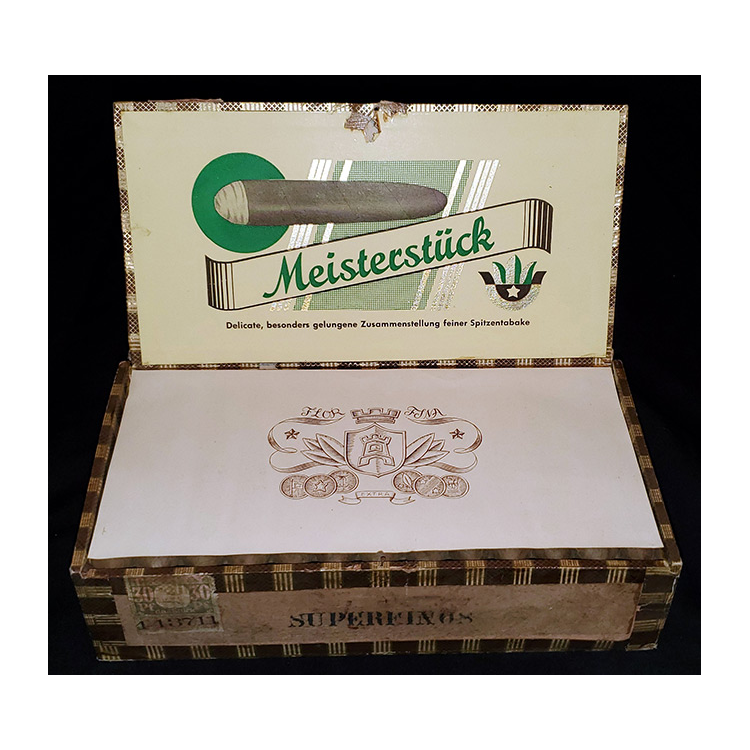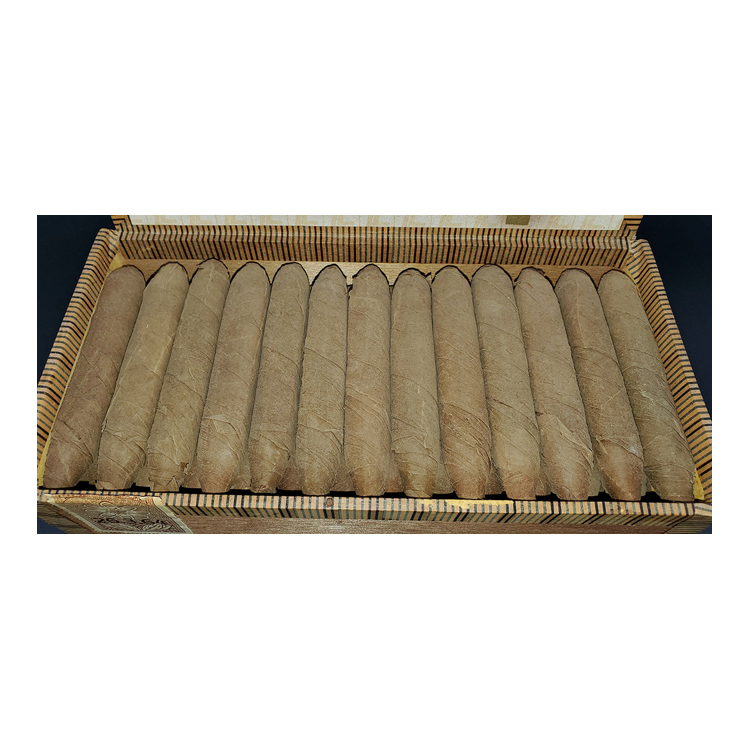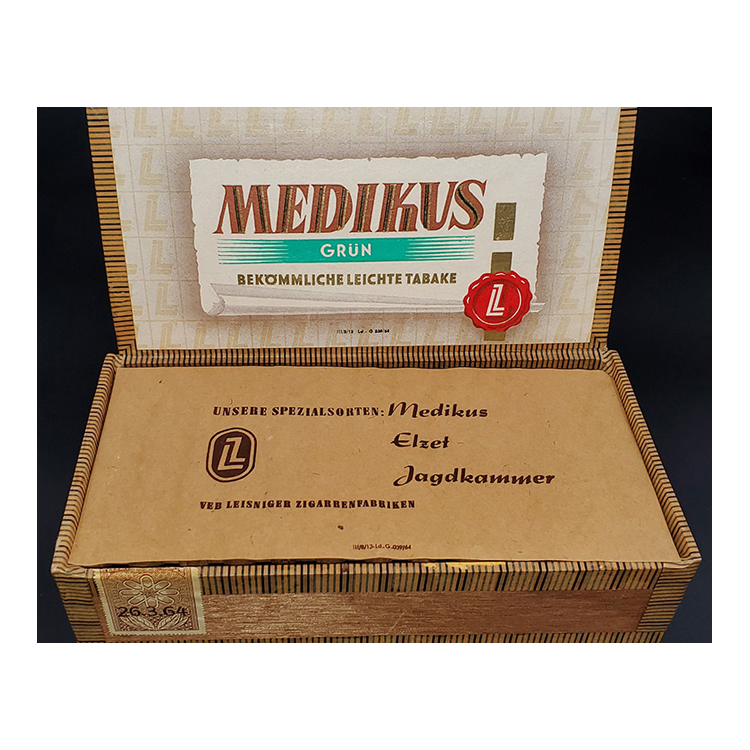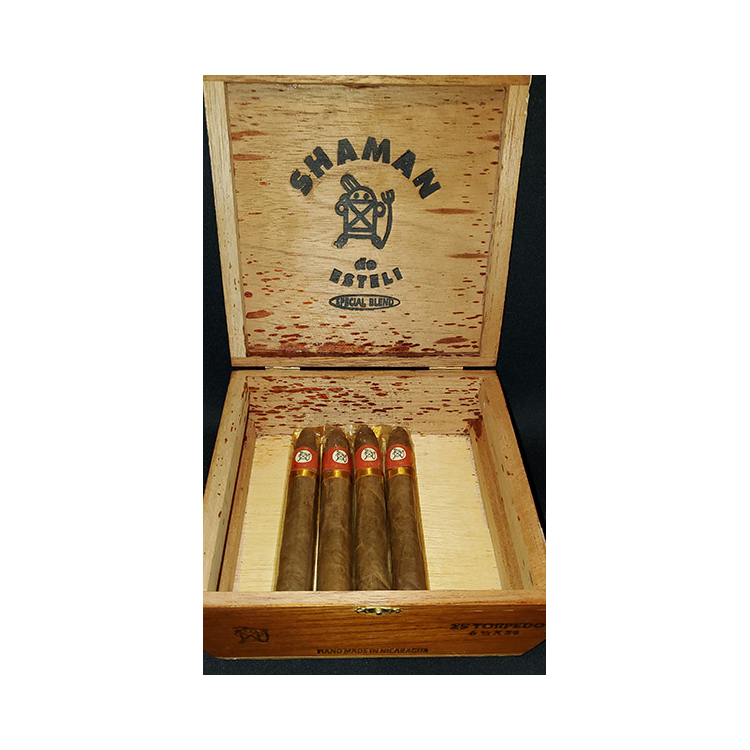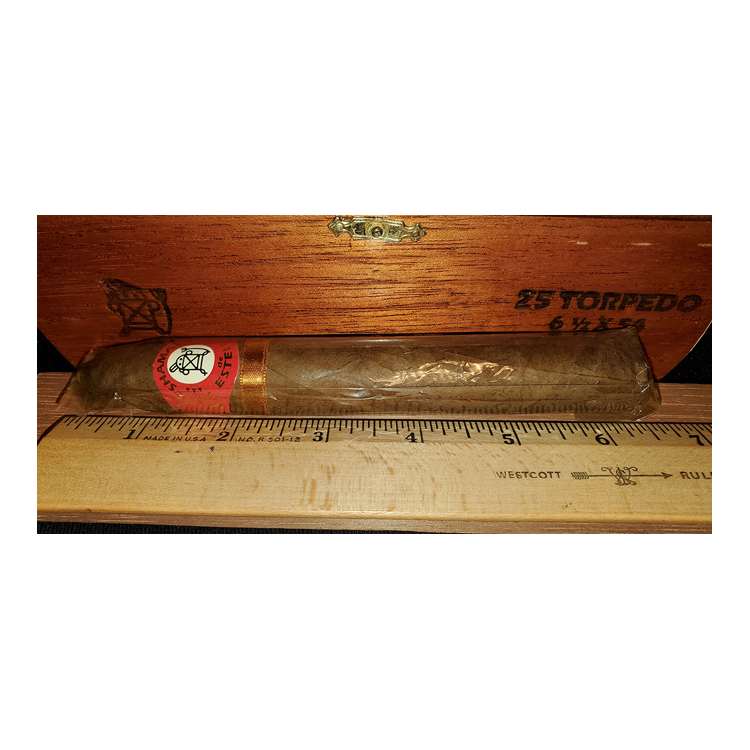1990s GDM COHIBA TORPEDO DOMINICAN REPUBLIC SINGLES
$25.00
- FREE delivery for orders over $150
- Exceptional quality control
- Secure & Hassle-Free Payments
I know what you are thinking…fake cigar! In todays world I would probably agree with that initial observation however, there are details to consider before jumping to that conclusion. I will explain why I am willing to let my clientele decide instead of hoarding these truly wonderful cigars. These are labeled Dominican NOT Cuban. Please examine the photos for closeup inspection.
First, the story…I got these directly from the liquidator of a very high end Colorado estate who personally knew the owner. They supposedly were stored in a humidor since the early to mid 80’s (turns out it was the mid 90s), located in a wine cellar environment and were not part of the estate sale. In my experience with aged vintage cigars, the condition of the cigars and the yellowing of the cello would tend to support the storage statement. These cigars could have been bundled and sealed in boxes for up to 35 years. Aged cigars tend to take the shape of the surrounding cigars, similiar to box press but naturally occuring over time. In these bundles, most of the cigars have minor semi-flat edges depending on the position in the bundle. The cello yellowing is another indicator of aging, which can be caused by many factors like oils being released etc. Not all aged cigars share this characteristic as I have many older cigars with clear cello. It is worth noting that the cello is not crispy or brittle, lending to the proper storage statement. Based on these facts I believe these cigars are capable of being from that time period.
But wait, there’s more information to consider.
If my above analysis is correct, then we have gone back to a time when counterfeiting Dominican cigars would have no purpose. Dominican cigars were not fetching large sums of money even with the Cohiba name. So where did these come from? Here is a little Wiki history exerpt about the Dominican Cohiba:
“The General Cigar Company, a private firm having no relation whatsoever to the Cuban cigar industry, first registered the name Cohiba in the United States in 1978 and subsequently began selling cigars under the Cohiba brand in that country (US) in the 1980s. Manufacture and sales of General Cigar’s brand was significantly expanded during the 1990s cigar boom, with General Cigar’s product known colloquially as “Red Dot Cohiba,” owing to the red dot in the middle of the “O” in “Cohiba” on its bands and boxes. This Cohiba is related to the Cuban product in name only, containing no Cuban tobacco, and thus is the only “Cohiba” that can be sold legally in the United States.”
The above statement confirms that General Cigar’s Dominican Cohibas were manufactured for US distribution in the 1980s. Marketed with a plain band and the name Cohiba, the public wasn’t buying it and sales dwindled. General Cigar decided in the late 1980s to regroup/rebrand and after a few years hiatus reapplied for a second Cohiba trademark in 1992. The result was the Cohiba “Red Dot” Dominican we see on the market today.
Fast forward to 1997, in a court case (General Cigar vs GDM) it is revealed that sometime in the late 1980s to early 90s a company named Monte Cristi began making Dominican cigars in the Dominican Republic and calling them Cohibas. During this time, as stated in the lawsuit, a company named Global Direct Marketing (GDM) sought to capitalize on what they say was an abandoned, public domain trademark since General cigar had ceased production of their Cohiba. GDM first attempted to import their Dominican Cohiba into the US with Monte Cristi but US Customs was seizing the cigars as counterfeit, possibly believing all Cohibas were either Cuban or that they where entangled in trademark law. Sometime around 1993 or 94, to eliminate the seisures, GDM began importing the Monte Cristi Dominicans without markings and GDM had them banded, labeled and packed in NY for sale in the US as a Dominican Cohiba. The labeling described in the lawsuit that was applied in NY to the GDM Cohibas matches exactly to these cigars I have on my website. Despite allegations made by General cigar as to inferiority, the construction and cap is flawless, except for natural boxpress aging. The bands are professionally printed and perfectly fitted on each cigar. The bands are Cohiba color matched, thick, glossy paper stock and not cheaply made which rival any unembossed band on the market at that time. The flavor is of vintage quality and the burn is true.
Considering all the above, I originally believed these were from the General Cigar 1980s distribution but in light of the ongoing research, the 1997 lawsuit and the emergence of a recent trademark case in Dec 2022, I now believe these cigars were part of the GDM Cohiba distribution of the early 1990s. These cigars are real vintage, aged Dominican cigars that have their place in history as part of an ongoing 45 year old legal battle regarding the name Cohiba and who has the legal right to US distribution. Over the last year I have discussed this with General Cigar representatives and gotten comments like ” I have only heard of these but never actually seen one” and “…”sure you could fake them but why would you”. Indeed, why would you? These cigars are nothing less than part of being a legal football regarding the Cohiba nomenclature, with a hint of American greed and capitalism. They were distributed nationally by GDM, not made by a backroom counterfeiter for street corner sale. I am not charging nor did I pay Behike prices. I am merely presenting these for what they are; a vintage Dominican, a part of a historic legal battle and a fine aged cigar. These are under priced for something you won’t find anywhere else and I hope you will not let scepticism deprive you of an enjoyable smoke. Enjoy!
For a cigar review including more background into the history of this cigar with the surrounding legal battles research; click the links below and watch the BACKYARD CIGARS videos:
Video link: Will the real Cohiba please stand up?
Video link: Will the real Cohiba please stand up? Part 2
5 in stock
I know what you are thinking…fake cigar! In todays world I would probably agree with that initial observation however, there are details to consider before jumping to that conclusion. I will explain why I am willing to let my clientele decide instead of hoarding these truly wonderful cigars. These are labeled Dominican NOT Cuban. Please examine the photos for closeup inspection.
First, the story…I got these directly from the liquidator of a very high end Colorado estate who personally knew the owner. They supposedly were stored in a humidor since the early to mid 80’s (turns out it was the mid 90s), located in a wine cellar environment and were not part of the estate sale. In my experience with aged vintage cigars, the condition of the cigars and the yellowing of the cello would tend to support the storage statement. These cigars could have been bundled and sealed in boxes for up to 35 years. Aged cigars tend to take the shape of the surrounding cigars, similiar to box press but naturally occuring over time. In these bundles, most of the cigars have minor semi-flat edges depending on the position in the bundle. The cello yellowing is another indicator of aging, which can be caused by many factors like oils being released etc. Not all aged cigars share this characteristic as I have many older cigars with clear cello. It is worth noting that the cello is not crispy or brittle, lending to the proper storage statement. Based on these facts I believe these cigars are capable of being from that time period.
But wait, there’s more information to consider.
If my above analysis is correct, then we have gone back to a time when counterfeiting Dominican cigars would have no purpose. Dominican cigars were not fetching large sums of money even with the Cohiba name. So where did these come from? Here is a little Wiki history exerpt about the Dominican Cohiba:
“The General Cigar Company, a private firm having no relation whatsoever to the Cuban cigar industry, first registered the name Cohiba in the United States in 1978 and subsequently began selling cigars under the Cohiba brand in that country (US) in the 1980s. Manufacture and sales of General Cigar’s brand was significantly expanded during the 1990s cigar boom, with General Cigar’s product known colloquially as “Red Dot Cohiba,” owing to the red dot in the middle of the “O” in “Cohiba” on its bands and boxes. This Cohiba is related to the Cuban product in name only, containing no Cuban tobacco, and thus is the only “Cohiba” that can be sold legally in the United States.”
The above statement confirms that General Cigar’s Dominican Cohibas were manufactured for US distribution in the 1980s. Marketed with a plain band and the name Cohiba, the public wasn’t buying it and sales dwindled. General Cigar decided in the late 1980s to regroup/rebrand and after a few years hiatus reapplied for a second Cohiba trademark in 1992. The result was the Cohiba “Red Dot” Dominican we see on the market today.
Fast forward to 1997, in a court case (General Cigar vs GDM) it is revealed that sometime in the late 1980s to early 90s a company named Monte Cristi began making Dominican cigars in the Dominican Republic and calling them Cohibas. During this time, as stated in the lawsuit, a company named Global Direct Marketing (GDM) sought to capitalize on what they say was an abandoned, public domain trademark since General cigar had ceased production of their Cohiba. GDM first attempted to import their Dominican Cohiba into the US with Monte Cristi but US Customs was seizing the cigars as counterfeit, possibly believing all Cohibas were either Cuban or that they where entangled in trademark law. Sometime around 1993 or 94, to eliminate the seisures, GDM began importing the Monte Cristi Dominicans without markings and GDM had them banded, labeled and packed in NY for sale in the US as a Dominican Cohiba. The labeling described in the lawsuit that was applied in NY to the GDM Cohibas matches exactly to these cigars I have on my website. Despite allegations made by General cigar as to inferiority, the construction and cap is flawless, except for natural boxpress aging. The bands are professionally printed and perfectly fitted on each cigar. The bands are Cohiba color matched, thick, glossy paper stock and not cheaply made which rival any unembossed band on the market at that time. The flavor is of vintage quality and the burn is true.
Considering all the above, I originally believed these were from the General Cigar 1980s distribution but in light of the ongoing research, the 1997 lawsuit and the emergence of a recent trademark case in Dec 2022, I now believe these cigars were part of the GDM Cohiba distribution of the early 1990s. These cigars are real vintage, aged Dominican cigars that have their place in history as part of an ongoing 45 year old legal battle regarding the name Cohiba and who has the legal right to US distribution. Over the last year I have discussed this with General Cigar representatives and gotten comments like ” I have only heard of these but never actually seen one” and “…”sure you could fake them but why would you”. Indeed, why would you? These cigars are nothing less than part of being a legal football regarding the Cohiba nomenclature, with a hint of American greed and capitalism. They were distributed nationally by GDM, not made by a backroom counterfeiter for street corner sale. I am not charging nor did I pay Behike prices. I am merely presenting these for what they are; a vintage Dominican, a part of a historic legal battle and a fine aged cigar. These are under priced for something you won’t find anywhere else and I hope you will not let scepticism deprive you of an enjoyable smoke. Enjoy!
For a cigar review including more background into the history of this cigar with the surrounding legal battles research; click the links below and watch the BACKYARD CIGARS videos:
Video link: Will the real Cohiba please stand up?
Video link: Will the real Cohiba please stand up? Part 2

